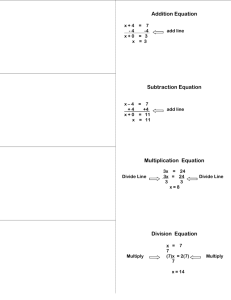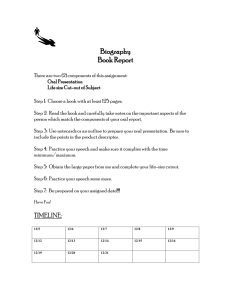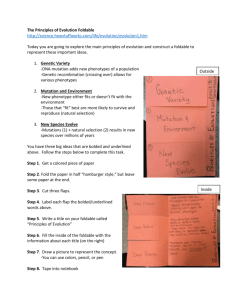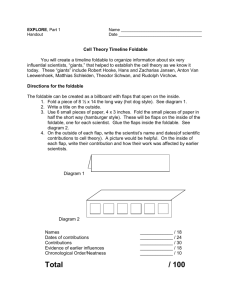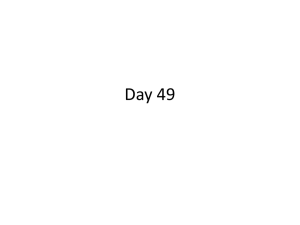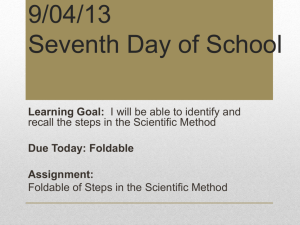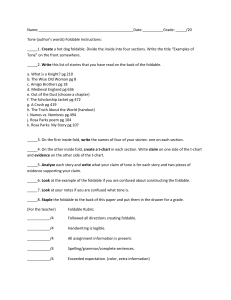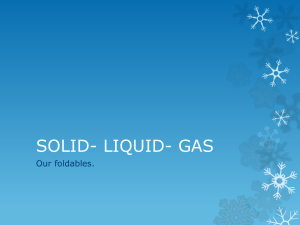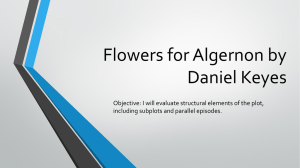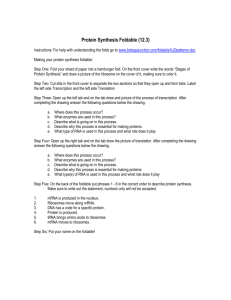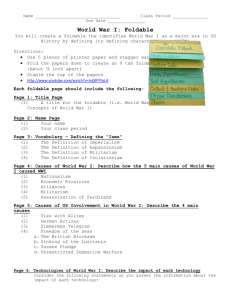Foldable Formative Assessments Presentation
advertisement
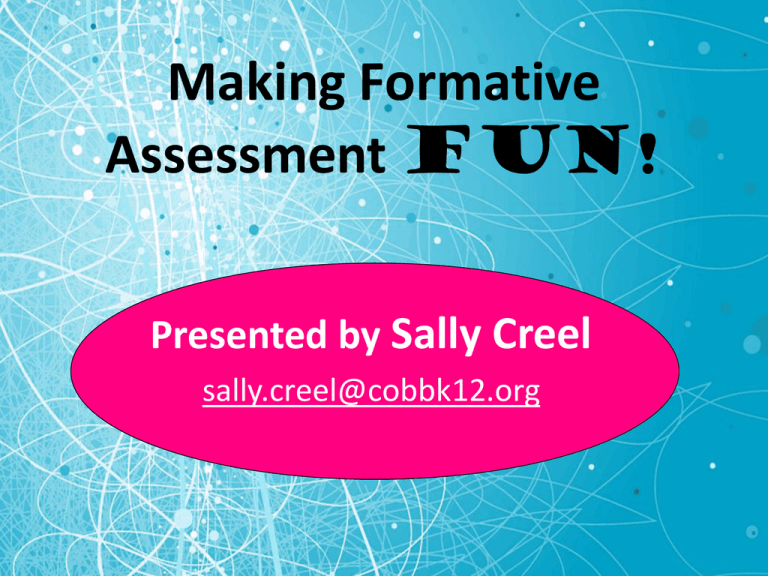
Making Formative Assessment FUN! Presented by Sally Creel sally.creel@cobbk12.org Ken O’Connor “How to Grade FOR Learning” • Formative Assessment: designed to provide direction for improvement and/or adjustment to a program for individual students or for a whole class (e.g., quizzes, initial drafts/attempts, homework [usually], and questions during instruction) Formative Assessments • The tension between assessment for accountability and assessment to inform teaching reduces the amount of time teachers spend on understanding what their students think prior to instruction and using that information to design learning opportunities that help students develop deeper conceptual understanding. - P. Keeley p. ix Science: Formative Assessments • Unfortunately an imbalance in assessment practices has led to a cycle of even more standardized testing of students and “mile wide, inch deep” instruction, often with marginal gains in achievement. When science tests scores fail to improve significantly, often the knee jerk reaction is to increase the cycle of testing and test preparation, covering large amounts of content in a superficial way. • - P. Keeley p. ix Balanced Classroom Assessment Strategies Selected Response Constructed Response Performance Assessment •Multiple Choice •True-False •Matching •Fill-in-theblank (words, phrases) •Essay •Short answer (sentences, paragraphs) •Diagram •Web •Concept Map •Flowchart •Graph •Table •Matrix •Illustration •Presentation •Movement •Science lab •Athletic skill •Dramatization •Enactment •Project •Debate •Model •Exhibition •Recital Informal Assessment •Oral questioning •Observation •Interview •Conference •Process description •Checklist •Rating scale •Journal sharing •Thinking aloud a process •Student selfassessment •Peer review What the research says…. “an enormous proportion of daily lessons are simply never assessed—formally or informally. For the majority of lessons, no evidence exists by which a teacher could gauge or report on how well students are learning essential standards” Schmoker, 2006, p.16 Working with Words Frayer Model center of gravity Definition: Examples: mass weight Sentence: mass Illustration: gravity Synectics • Teacher selects an important topic • Students list 4 unusual items (unrelated to topic) • Students create a relationship between the topic and each of the 4 items ¾ Fold Book • http://cicobb.typepad.com/es/reading-strategies-for-science.html ¾ Fold Book Template in PPT Foldable T-Chart or Mock-Foldable Venn Diagram Foldable Chain Notes • One overarching question presented to the class • Response written on strip of paper • Chain passed around class, students add their own link • Teacher reviews chain after class or with the class as a whole Chain Notes Modified • Begin with a question printed at the top of a paper. The paper is circulated from student to student. Each student responds with one to two sentences related to the question and passes it on to the next person. • Upon receiving the previous “chain of responses” a student adds a new though or builds on a prior statement. Modified Chain Notes Example • What is matter? – – – – – – – – – Matter is all around us and makes up everything. Matter takes up space and has mass. Matter has volume and mass. You can see or feel matter. Some kinds of matter can’t be seen, like gases. Matter is in a solid, liquid, and gas forms. All things made of atoms are matter. Atoms are small, but they matter even without being seen. Etc. Matchbook Foldable Word (Outside) Picture (Inside) Definition 2 Tab Matchbook Foldable Working with Words Envelope Foldable Vocabulary Diagram
